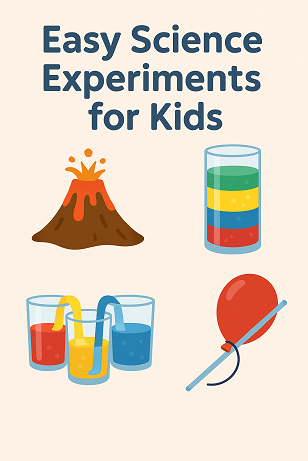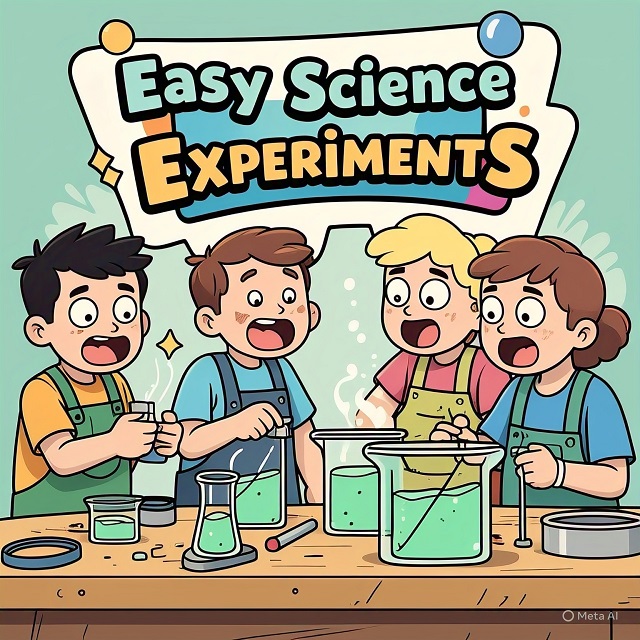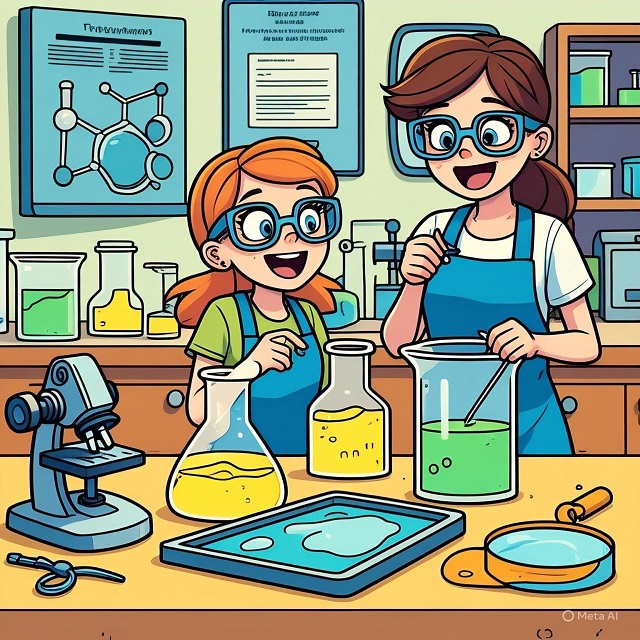Looking for a fun way to combine learning and playtime? Easy science experiments for kids are the perfect answer! They turn your kitchen, backyard, or classroom into a mini laboratory, helping kids understand science through hands-on discovery. Plus, they’re a great way to spend quality time together while fueling your child’s natural curiosity.
Table of Contents

Why Do Easy Science Experiments Matter?
Kids are natural-born scientists. They love asking questions, testing limits, and exploring how the world works. With simple experiments, you give them the tools to turn questions into exciting learning adventures.
Not only do these experiments help improve critical thinking and problem-solving skills, but they also build a strong foundation in STEM (Science, Technology, Engineering, Math) from a young age. And the best part? You don’t need fancy lab equipment. Most experiments use items you already have at home.

Top 5 Easy Science Experiments for Kids
Here are five super-fun, safe, and easy-to-do science experiments to try with your children:
1. Baking Soda and Vinegar Volcano
A classic and exciting way to introduce chemical reactions. Simply build a volcano shape with clay or playdough around a small container. Fill it with baking soda, add a few drops of food coloring, and pour in vinegar. Watch the fizzing lava flow!
What it teaches: Acid-base reactions and gas formation.
2. Rainbow in a Jar
Layer different sugar-water solutions (each dyed with food coloring) in a jar. Start with the most sugary solution and end with the least. If poured gently, the layers won’t mix and will form a rainbow.
What it teaches: Liquid density and patience.
3. Magic Milk Explosion
Pour whole milk into a dish, add drops of food coloring, and touch the surface with a dish-soap-dipped cotton swab. The colors swirl into beautiful patterns.
What it teaches: Surface tension and molecular interaction.
4. Walking Water
Place three cups in a row: two with colored water (red and blue) and the third empty. Bridge them with folded paper towels. Over time, water “walks” into the empty cup and blends the colors.
What it teaches: Capillary action and color mixing.
5. Balloon Rocket
Thread a straw onto a string stretched across the room. Tape a blown-up balloon to the straw. Let go and watch it zoom!
What it teaches: Newton’s Third Law of Motion (for every action, there’s an equal and opposite reaction).

Tips for Making Science Fun
- Let kids predict the outcome before trying the experiment.
- Encourage note-taking or drawing what they observe.
- Repeat experiments to test consistency.
- Ask open-ended questions like “What do you think will happen?” or “Why did that happen?”
Conclusion
Easy science experiments for kids make learning fun, exciting, and memorable. They transform abstract concepts into real-world discoveries and give children a chance to think, question, and explore. Whether it’s a rainy day activity or part of a homeschool plan, these experiments offer powerful educational moments disguised as play.
FAQs
1. What age is suitable for these experiments?
Most of these are ideal for kids ages 4–12, with adult supervision.
2. Can I do these experiments without any special tools?
Yes! Most require only household items like vinegar, baking soda, food coloring, and water.
3. What if the experiment doesn’t work?
Use it as a teaching moment to explore why. Science is about testing and learning.
4. Are these good for classroom use?
Absolutely. They work well in small groups and encourage teamwork and observation.
5. How can I encourage my child to love science more?
Make it interactive, exciting, and regular. Tie experiments to real-world concepts and let their curiosity lead the way.
Gentle Parenting Techniques: Nurturing Your Child with Empathy and Respect
